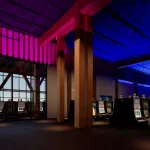
Flypast honours US bomber crew who died saving British kids
SHEFFIELD, England — Tony Foulds has a routine when he visits the memorial for 10 American airmen killed in World War II.
First, he kisses his finger and lays it on the metal plate bearing their names. Then he sits beside the rock, laying a shaky hand on its smooth slope with the care of someone offering comfort to a loved one. As he taps the stone, Foulds tells the airmen about the weather and his plans for the day.
It’s the least he can do, because Foulds believes the young Americans sacrificed their lives to save his. The pilot decided not to land his crippled plane on Endcliffe Park, in the English city of Sheffield, to avoid a group of children on the grass.


